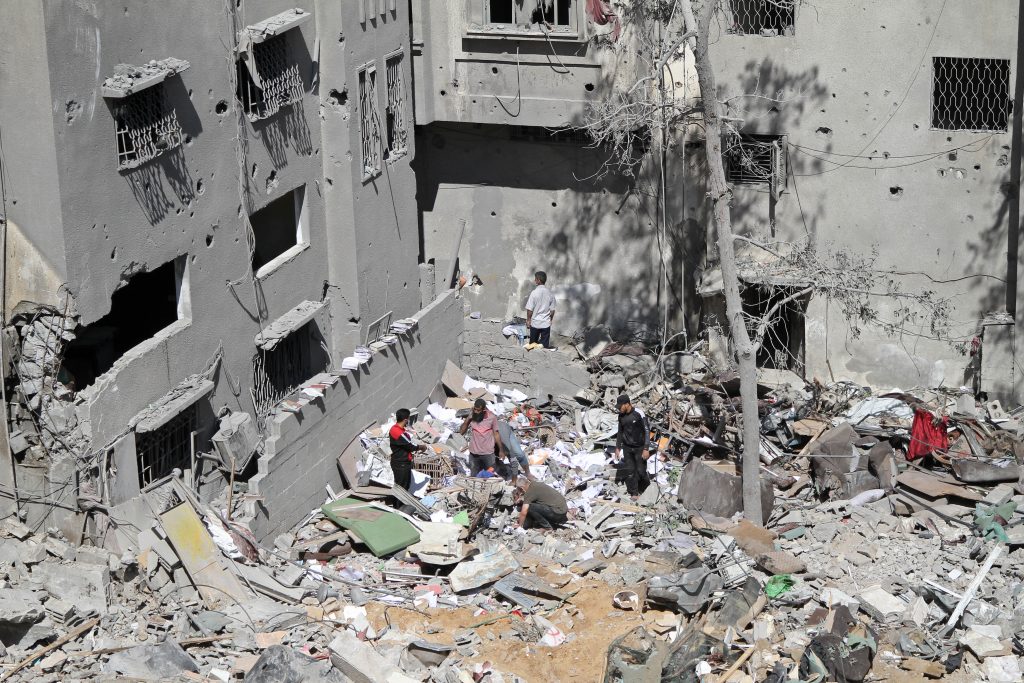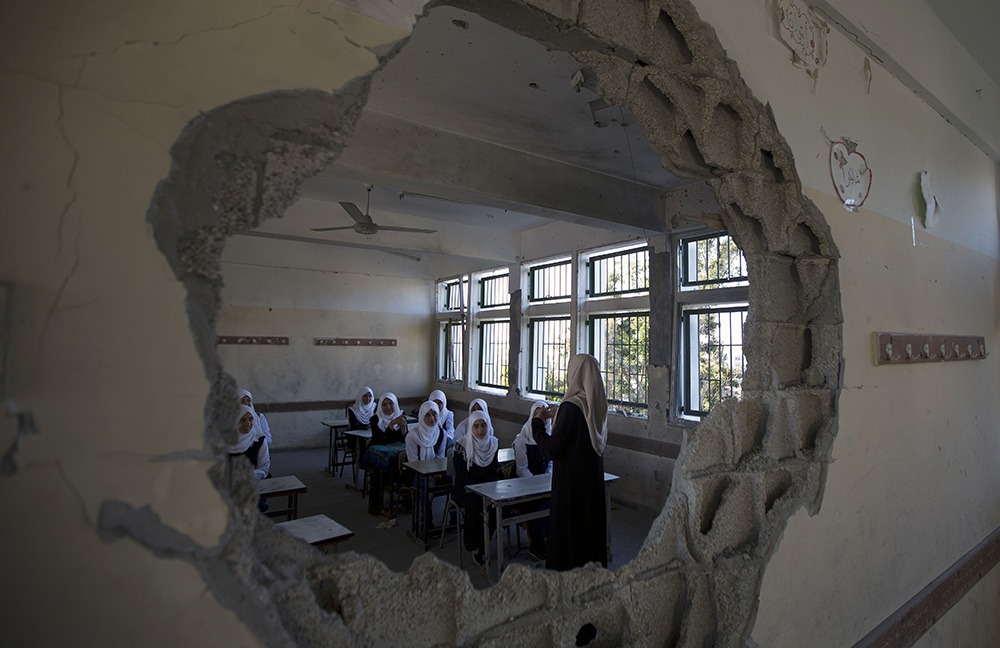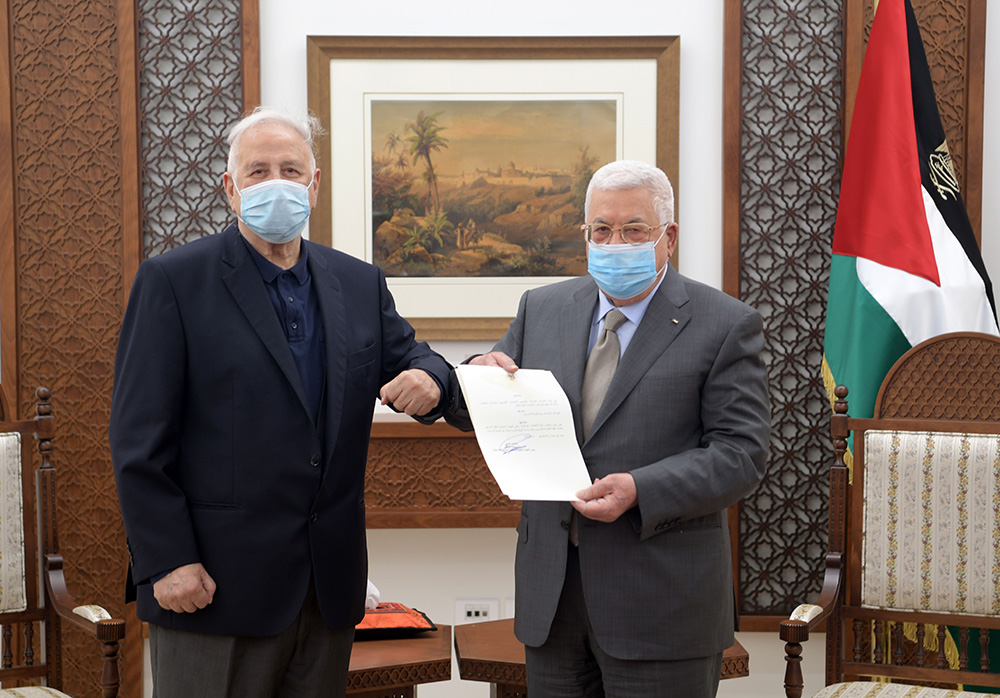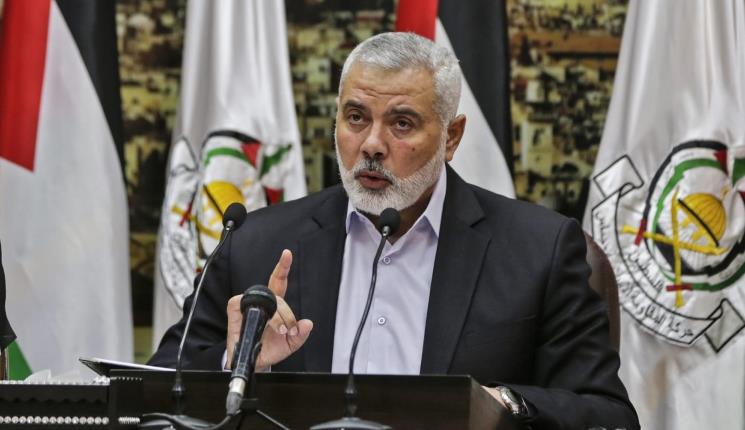Clashes between Palestinians and Israelis have been on the rise since Islam began ramadan in 2021. In recent days, serious clashes have broken out between Israel and the Palestinian militant group Hamas in the Gaza Strip, with Hamas firing about 3,000 rockets at Israel and Israel carrying out dozens of air strikes on Gaza, hitting hundreds of targets.
At least 192 people, including 58 children and 34 women, have been killed in the Gaza Strip since the outbreak of the Israeli-Palestinian conflict on Monday, according to Gaza’s health ministry. Israel reported 10 deaths, including two children.
Despite casualties on both sides, there is no sign of a ceasefire. Israeli Prime Minister Benjamin Netanyahu said on the 16th, to “continue to make every effort” to advance the attack on Hamas, and stressed that as long as necessary will take action to restore normal life of Israeli citizens. In a televised address in Doha, the Qatari capital, Hamas’s political director, Haniyeh called the Al-Aqsa Mosque the group’s “red line” and warned Israel not to “play with fire.”
Haniyeh’s reference to the Al-Aqsa Mosque is a direct trigger for this round of Israeli-Palestinian conflict. In early May, the conflict between the two peoples intensified when an Israeli court decided to uphold the Israeli settler claim and issued an expulsion order against several Palestinian families in Sheikh Jala, East Jerusalem.
On 7 May, thousands of Palestinians clashed with Israeli police at the Al-Aqsa Mosque on the Temple Mount in Jerusalem’s Old City, known to Arabs as the “Prestige Sanctuary”, injuring more than 200 Palestinians and 17 Israeli policemen. As the conflict heats up, Hamas in the Gaza Strip has fueled a series of rocket fires into Major Israeli cities, sparking a backlash from Israel that has led to violent clashes between the two sides.
Indeed, the Gaza Strip is not only the focus of this round of Israeli-Palestinian conflict, it has also been at the forefront of the Israeli-Palestinian conflict for many years, with thousands of casualties in the Gaza Strip in 2008, 2009, 2012, 2014, 2018 and 2019.
What the hell is going on in the Gaza Strip?
Why has there been more smoke for years?
The city was “born” of war.
The Gaza Strip covers an area of 365 square kilometres, only one-fifth of the West Bank, another Palestinian component, but nearly half of the Palestinian population lives in the Gaza Strip (estimated at about 2.05 million in 2020, compared with about 5.16 million in Palestine). That’s why the Washington Post previously noted that the Gaza Strip’s population density is not as high as that of cities such as Mumbai and Hong Kong, but it is still much higher than many cities around the world.
Gaza, however, has not always been a metropolis. In 1914, before the outbreak of World War I, Gaza, under Ottoman rule, had a population of just over 40,000, a small town that had fallen to 18,000 in 1922 after World War I. The following year, Gaza was officially transferred to British mandate and became part of the British Palestinian Trusteeship.
After World War II, Britain’s mandate over Palestine was coming to an end. Since the large number of Jews scattered around the world had emigrated to Palestine since the 19th century, and by 1947, more than 600,000 Palestinian Jews, or 33 per cent of the total Palestinian population, had become an unsuquintable force, and in order to balance Arab and Jewish forces and settle the dispute, the United Nations adopted resolution 181 in 1947: the partition of Palestine, with both Jewish and Arab peoples enjoying equal rights to statehood in Palestine. According to the partition resolution, Gaza was assigned to the Arab States.
However, Arabs who had moved to various parts of Palestine since the 7th century did not buy it, and the first Middle East war broke out on May 15, 1948, the day after Israel declared statehood, when arab coalition forces led by Egypt, Jordan, Syria and other countries attacked Israel.
The Arab coalition, which was less combative than the Israel Defense Forces, soon lost ground on the battlefield and was forced to cease fire with Israel in 1949. As the victor, Israel gained half of the land that should have been given to Palestinian statehood, while defeated Egypt and Jordan controlled the Gaza Strip and the West Bank, respectively, for Palestinian statehood.
That is why once sparsely populated Gaza has become at the forefront of Arab-Israeli confrontation.
During the first and second Middle East wars, a large number of Palestinians were forced to flee, including some 200,000 into the Gaza Strip. The sudden population surge has left Gaza short of limited resources because of the limited infrastructure and the destruction of the war. By 1967, Gaza’s population was six times that of 1948, and living standards had declined markedly. Plans to leave Gaza to earn a living have also failed because of Egypt’s military control of the Gaza Strip and restrictions on access.

In 1967, Feeling The Growing Power Of Arab States And The Growing Threat To Their National SecuritY, Israel Decided To Pre-Emptively Launch A Third Middle East War, Defeating The Arab Coalition In Just Six Days, While Taking Control Of The Gaza Strip While Also Taking Control Of The Entire West Bank, The Golan HeightS And The SinaI Peninsula.
Heavy blockade
Since then, the Gaza Strip has been occupied by Israel. The Gaza Strip, a part of the newly occupied territory in Israel with superior natural conditions, is located in the southwestern corner of the crescent-rich land, with more coastal and rainfall and fertile land, so that agriculture in the Gaza Strip is still well developed, but its water supply is heavily dependent on the Bisso Valley, which is controlled by Israel, giving Israel an excellent opportunity to expel Arabs from Gaza.
It was Israel’s decision to restrict Arab access to water resources in Gaza and to suppress its agricultural production, making food self-sufficient in the Gaza Strip and thus forcing Arabs to leave Gaza in order to make room for Jewish settlements. Israel has also imposed further restrictions on Gaza agriculture, such as prohibiting Arab farmers from expanding the cultivation of new fruit trees, setting quotas for Gaza’s export crops and having to export through Israeli channels and liberalizing Israeli exports to Gaza, thereby forcing large numbers of Arabs to abandon agriculture.
In addition, Israel has taken economic measures to attract Arabs to Israel to work for a living while providing cheap labour for the country.
After expelling some Arabs, Israel built Jewish settlements in Gaza. Between 1967 and 2005, Israel built 21 Jewish settlements in the Gaza Strip, representing 20 per cent of the total area of the Gaza Strip. Although the construction of settlements in the occupied Palestinian territories has effectively eased Israel’s land tensions, this has exacerbated ethnic rivalries and frictions between Jews and Arabs, directly triggered two major Palestinian intifadas and caused considerable loss of life and economic losses to Israel.
During the second Palestinian intifada, the Gaza Strip became a battleground for the Israeli-Palestinian conflict, with the Israeli Air Force blowing up Gaza’s only airport in 2002 and destroying a large amount of infrastructure, but still failing to prevent the Palestinian side from continuing to receive foreign military assistance and launching attacks against Israel on Gaza as a base, demonstrating that Israel’s plan to “step up” Gaza by building settlements had had little effect, neither guaranteeing Israel’s security nor establishing Israeli control over Gaza.
Israel has therefore decided to change its policy towards the Gaza Strip by imposing a land, sea and air “trinity” blockade: on land, Israel has rebuilt and reinforced the separation wall between the Gaza Strip and Israel, heavily guarded and a 300-metre-wide buffer zone on the Gaza side, prohibiting anyone from entering; The Israeli Navy has zoned a 1.5-nautical-mile-wide and one-nautical-mile exclusion zone along the Gaza-Israel-Egypt border and limited the area of activity in Gaza’s adjacent waters to six nautical miles, where violators will be sunk;
Even so, armed forces in the Gaza Strip continue to carry out occasional attacks against targets in Israel, not to mention settlements in the Gaza Strip. For security and economic reasons, the Knesset adopted a unilateral withdrawal resolution from the Gaza Strip in 2005, leaving the Gaza Strip under the control of the Palestinian Authority, but retaining control over Gaza’s land crossings, maritime fishing exclusion zones and airspace.
Israel, which had thought it would get rid of the hot potato of the Gaza Strip once and for all, did not expect a sudden turnaround in the Palestinian parliamentary elections the following year, arguing for a victory for Hamas, which had regained the occupied territories by force, replacing the more moderate Palestinian National Liberation Movement (Fatah) as the ruling party in Palestine. The new Hamas refusal to recognize Fatah’s previous peace deal with Israel has left The Palestinians in a state of internal spat that eventually led to a civil war. In 2007, Hamas defeated Fatah and ousted it from the Gaza Strip, gaining control of it.
Since then, Hamas has smuggled weapons into the Gaza Strip to arm itself and has frequently launched attacks against Israel in an attempt to retake the occupied Palestinian territories by force. Israel launched the Gaza war in 2008, attacking Hamas from land, sea and air, killing more than 6,000 people and significantly reducing the frequency of Hamas rocket fire into Israel.
At the same time, however, nearly 10,000 homes in the Gaza Strip, the main battleground, were destroyed, more than 50,000 Palestinians were left homeless, 15 hospitals and 43 health service stations were severely damaged, nearly half a million people had no running water, about 1 million people had no electricity and direct economic losses amounted to $2 billion.
After the war, Israel continued to impose a comprehensive blockade on the Gaza Strip for security reasons, and in the years that followed, in conjunction with Egypt, it closed all seven crossings in the Gaza Strip, denying access to persons or goods, and releasing only the seriously ill and limited humanitarian relief.

As a result, not only does the Gaza Strip have difficulty in obtaining the materials needed for reconstruction and recover from the war, but social problems such as food shortages, lack of water, electricity stress, land pollution and deteriorating medical conditions are becoming increasingly prominent, with unemployment in the Gaza Strip as high as 45 per cent and 70 per cent of the population barely surviving United Nations relief.
Recession and violent conflict have become dangerous “cycles”
Today, Israel’s blockade of the Gaza Strip has created a dangerous “cycle”: Hamas lacks the capacity to develop the Gaza Strip’s economy and improve people’s livelihood, and devotes limited resources to arms smuggling and attacks, which is bound to cause unease in Israel.
Israel, which has been repeatedly attacked, continues to blockade the Gaza Strip, and while preventing Hamas from receiving outside aid to launch attacks, the livelihood of the Gaza Strip has been greatly affected by the blockade: the ruins left by years of war are difficult to rebuild and living standards are hovering at low levels.
And the growing number of young Gazans struggling to survive in poverty are extremely dissatisfied with the status quo, opting to join Hamas and launch attacks against Israel, which in turn has led to an increase in the blockade…
If this cycle is to be broken, promoting the process of reconciliation between Hamas and Fatah is naturally one of the options. The Economist previously reported that the two sides signed a reconciliation agreement in Cairo in 2017 under Egyptian coordination, but the implementation of the agreement is not optimistic, including the holding of general elections, the process has been so slow to advance, so that Hamas is still based in the Gaza Strip, in 2018 and 2019 again with Israel.
In January 2021, Palestinian President Mahmoud Abbas signed a presidential decree confirming that the Palestinian Legislative Council elections, the presidential elections and the palestinian National Council elections of the PLO’s supreme authority would be held on 22 May, 31 July and 31 August, respectively.

However, in the early hours of 30 April, Abbas made a nationally televised address announcing the postponement of the general elections, which had been scheduled to begin on 22 May this year. Hamas, which actually controls the Gaza Strip, strongly opposes the postponement of elections, arguing that Mr Abbas and his Fatah group are “putting on a coup”.
In response, some analysts pointed out that Abbas postponed the election is the actual reason for Fatah’s long-standing internal strife, Abbas worried that Fatah can not form a unified force against Hamas, may repeat the 2006 legislative council election defeat, leaving the Palestinians continue to fall into the embarrassment of division.



